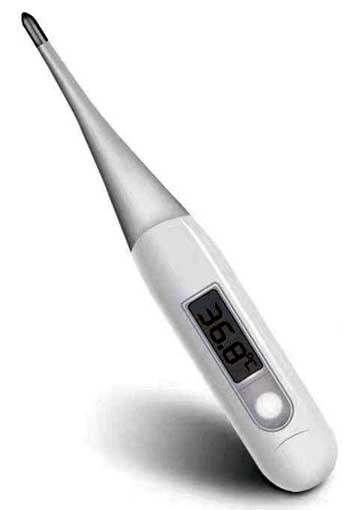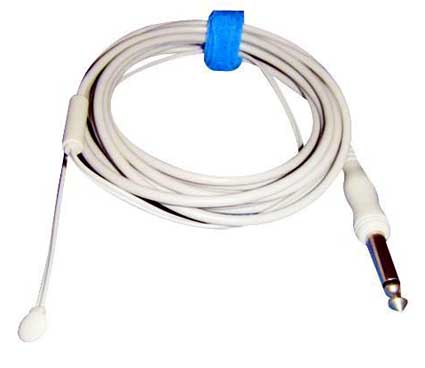Electronic thermometers bring new opportunities to temperature sensors
Since mercury (mercury) and most of its compounds are toxic, the ban and replacement of mercury thermometers has become a consensus in human society. In 2007, the European Parliament passed legislation prohibiting EU countries from using mercury-containing thermometers. By the end of 2007, 13 states in the United States had passed legislation prohibiting the use of mercury-containing thermometers. The electronic thermometer is the first choice to replace the mercury thermometer, and the thermometer will enter the era of electronic thermometers.
According to statistics, in 2007, the demand for electronic thermometers in the United States, Japan, the European Union and other countries and regions reached 184 million, an increase of 16% over 2006. In 2008, the demand was 228 million, an increase of 24% over 2007. In the EU and western developed countries, the total demand for high-precision temperature sensors for electronic thermometers in 2009 reached 276 million. And with the phasing out of mercury thermometers that do not meet environmental protection requirements, the annual demand will increase by more than 20%.

The core component of an electronic thermometer is the NTC temperature sensor that senses temperature. Because it is used to measure body temperature, the accuracy, stability and sensitivity of the temperature sensor are required to be very high. Due to the high technical requirements for measurement accuracy, reaction speed, and annual resistance drift rate, about 70% of NTC temperature sensors in electronic thermometers in China still need to rely on imports. This is also a bottleneck restricting the industrialization of electronic thermometers in China. It has been reported that because of the influence of the technical level of domestic NTC manufacturers, the NTC temperature sensor used in China's electronic thermometers needs to be imported 100% from abroad, which is not accurate. Many domestic enterprises have already started special research and development in this area, and have begun to supply the finished products manufacturers of electronic thermometers. However, due to the limitation of the NTC temperature sensor technology level, the electronic thermometers produced by the company are not ideal in terms of temperature measurement accuracy, reaction speed and stability, and more or less different from actual temperature and temperature drift. In order to solve the problems in this domestic industry, Yaxun Electronic Technology Co., Ltd. has organized a special technical research and development team since the beginning of 2006 to tackle this technology. It has obtained 4 national patents and developed a constant temperature oil tank (accepting national patent) with temperature control accuracy of 0.002 °C (ie 2 parts per thousand) for testing this product. After three years of technical research, at the end of 2008, we finally developed an NTC temperature sensor for electronic thermometers that is comparable to the world's leading NTC manufacturers.
The resolution of the sensor is up to ±0.01 °C, the accuracy is up to ±0.02 °C, the reaction speed is <2.8 seconds, the product stability is good, and the annual resistance drift rate is ≤0.1% (equivalent to less than 0.025 °C). Through repeated demonstrations by domestic and foreign users and testing by authoritative organizations, product performance has fully reached the level of advanced NTC manufacturers such as Japan. At present, this type of temperature sensor has achieved mass production and sales, with a monthly output of more than 3 million. In addition to providing support to domestic electronic thermometer manufacturers, it has also successfully exported to North America, South America, South Asia and other regions.
It can be predicted that environmentally-friendly electronic products, including electronic thermometers, will usher in a new era of rapid development.

According to statistics, in 2007, the demand for electronic thermometers in the United States, Japan, the European Union and other countries and regions reached 184 million, an increase of 16% over 2006. In 2008, the demand was 228 million, an increase of 24% over 2007. In the EU and western developed countries, the total demand for high-precision temperature sensors for electronic thermometers in 2009 reached 276 million. And with the phasing out of mercury thermometers that do not meet environmental protection requirements, the annual demand will increase by more than 20%.

The core component of an electronic thermometer is the NTC temperature sensor that senses temperature. Because it is used to measure body temperature, the accuracy, stability and sensitivity of the temperature sensor are required to be very high. Due to the high technical requirements for measurement accuracy, reaction speed, and annual resistance drift rate, about 70% of NTC temperature sensors in electronic thermometers in China still need to rely on imports. This is also a bottleneck restricting the industrialization of electronic thermometers in China. It has been reported that because of the influence of the technical level of domestic NTC manufacturers, the NTC temperature sensor used in China's electronic thermometers needs to be imported 100% from abroad, which is not accurate. Many domestic enterprises have already started special research and development in this area, and have begun to supply the finished products manufacturers of electronic thermometers. However, due to the limitation of the NTC temperature sensor technology level, the electronic thermometers produced by the company are not ideal in terms of temperature measurement accuracy, reaction speed and stability, and more or less different from actual temperature and temperature drift. In order to solve the problems in this domestic industry, Yaxun Electronic Technology Co., Ltd. has organized a special technical research and development team since the beginning of 2006 to tackle this technology. It has obtained 4 national patents and developed a constant temperature oil tank (accepting national patent) with temperature control accuracy of 0.002 °C (ie 2 parts per thousand) for testing this product. After three years of technical research, at the end of 2008, we finally developed an NTC temperature sensor for electronic thermometers that is comparable to the world's leading NTC manufacturers.
The resolution of the sensor is up to ±0.01 °C, the accuracy is up to ±0.02 °C, the reaction speed is <2.8 seconds, the product stability is good, and the annual resistance drift rate is ≤0.1% (equivalent to less than 0.025 °C). Through repeated demonstrations by domestic and foreign users and testing by authoritative organizations, product performance has fully reached the level of advanced NTC manufacturers such as Japan. At present, this type of temperature sensor has achieved mass production and sales, with a monthly output of more than 3 million. In addition to providing support to domestic electronic thermometer manufacturers, it has also successfully exported to North America, South America, South Asia and other regions.
It can be predicted that environmentally-friendly electronic products, including electronic thermometers, will usher in a new era of rapid development.






